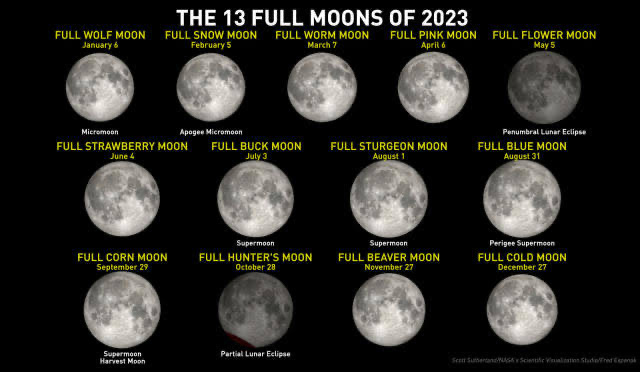April’s “pink” moon will appear on Wednesday night. It will reach its fullest at 5:34 a.m. Thursday morning. The “pink” moon is the common name for April’s full moon. Despite its name, this doesn’t mean the moon will actually appear to be pink.
Each month’s full moon has a unique name deriving from the Algonquin tribes. These are people who spoke Algonquin languages in various Native American tribes along the Atlantic Coast, into the interior along the Saint Lawrence River, and around the Great Lakes.The annual Old Farmers Almanac started publishing the Native American names for the full moons in the 1930s.

The pink moon got its name from the flower, Phlox subulata, also known as moss pink. This plant is native to the eastern USA and is one of the earliest widespread flowers. It was most likely named after the flower because April’s full moon often corresponded with its early springtime blooms.

The names listed in the Old Farmer’s Almanac are now well known and used often. However their origins are hard to trace and a single list does not reflect the wide variations of Algonquin tribes or other Native American tribes. Most Native American tribes have their own full moon names based on their customs and environment. That being said, many share themes such as weather, crops, and fishing and hunting that would also coincide with their traditions and legends.
April’s full moon would have also been referred to as the maple sap boiling moon by the largest Algonquin tribe called the Ojibwe. Other names include the sprouting grass moon, or the egg moon. Coastal North American tribes would have called it the fish moon because the shad fish would start to swim upstream at this time.
List of each months common full moon name, along with the date and time they are at their fullest:
- Wolf moon, January 6, 2023, at 11:07 p.m.
- Snow moon, February 5, 2023, at 6:28 p.m.
- Worm moon, March 7, 2023, at 12:40 p.m.
- Pink moon, April 6, 2023, at 5:34 a.m.
- Flower moon, May 5, 2023, at 6:34 p.m.
- Strawberry moon June 4, 2023, at 4:41 a.m.
- Buck moon, July 3, 2023, at 12:38 p.m.
- Sturgeon moon, August 1, 2023, at 7:31 p.m.
- Blue moon, August 31, 2023, at 2:35 a.m.
- Harvest moon, September 29, 2023, at 10:57 a.m.
- Hunters moon, October 28, 2023, at 9:24 p.m.
- Beaver moon, November 27, 2023, at 9:16 a.m.
- Cold moon, December 27, 2023, at 12:33 a.m.
There will be 13 full moons this year. This is actually a common occurrence. This happens because the phases of the moon are completed after 29.5 days. In total it only takes 354 days to meet 12 full cycles, falling short of the 365 days in a year. In which case every 2.5 years we have a 13th full moon in a calendar year.

The month that will contain a second full moon this year is August. The first full moon will be on the 1st of the month and the second will be on the 31st. The second full moon of a month is known as the blue moon. Though this is a mistake popularized in the 20th century. The blue moon would have actually been the third full moon out of four in an astronomical season. An astronomical season starting at the solstices or equinoxes. Like the pink moon it will not actually appear blue.
August’s second full moon will correspondingly be a super moon. A supermoon is when there is a full moon at the same time that the distance between the moon and Earth is at its shortest( lunar perigee). A super moon will appear about 7% larger and 15% brighter than a usual full moon. Though it can be up to 17% bigger and 30% brighter compared to when the Moon is furthest away (lunar apogee). When a full moon and a lunar apogee occur at the same time, that is a micro moon.

